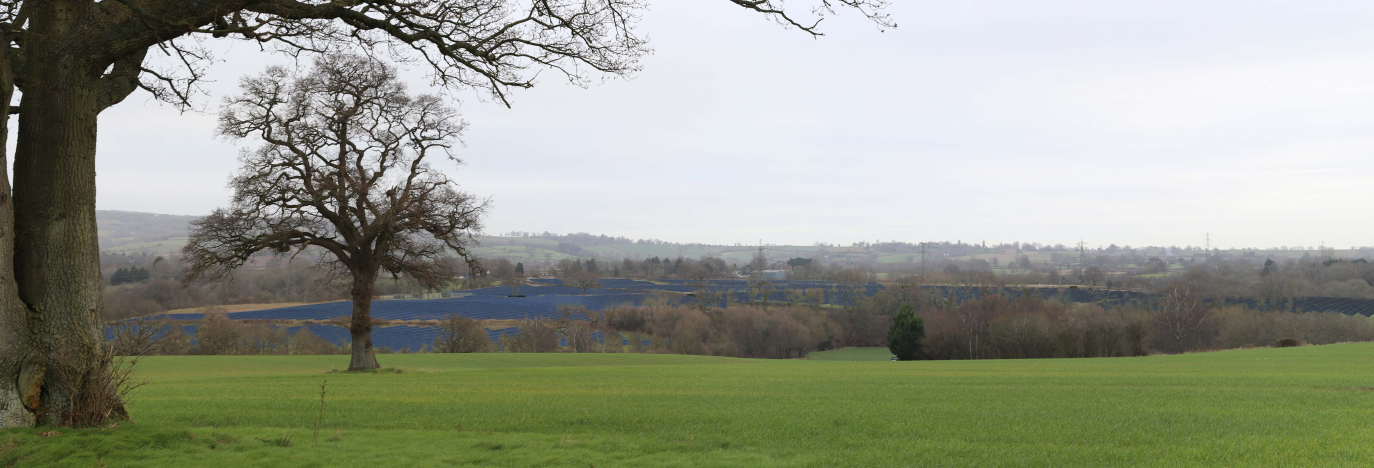Plans have been published for a solar farm at Brick House Farm, Grete (22/02565/FUL). The 54-hectare solar farm would have a capacity of around 49.9 MW, generating enough renewable energy to meet the annual electricity needs of approximately 15,000 homes. The developer, Bluefield, expects to begin construction of the site in 2023 if it gains approval from Shropshire Council.
Bluefield says the Greete site was chosen for its seclusion, relatively poor soil quality and access to the grid.
The proposal includes biodiversity and landscape enhancement measures, including hedgerow planting and filling gaps in existing hedgerows. Sheep may also be grazed underneath the solar panels.
The project is expected to contribute about £10 million in business rates to Shropshire Council over 40 years. A community fund of about £150k will be established to invest in local projects and initiatives.
The solar panels would be laid out in straight arrays from east to west across the field enclosures. They will be installed on a fixed tilt frame facing south to ensure optimum energy generation and will be 2.8m high at a maximum. There will be a number of inverters in containers across the site. These will be painted blue or green (grey is preferable, for example 18 B 29 Raven, as green counterintuitively sticks out in the countryside). A 25m high tower will be used to support the connection to the existing power pylons running across the site.
The visual impact of solar farms
The applicant’s landscape impact consultant (Pegasus Group) describes the site thus:
“The site has been subject to historic field boundary removal and is strongly influenced by multiple infrastructure networks above and below ground [power pylons, telecoms poles and underground fuel pipes]. Other than these detracting elements, the site is otherwise unremarkable, lacking any character defining elements or rare or unique landscape features.”
Pegasus say there will negligible or no change of view from the Titterstone Clee car park or from Caynham Camp. The view from the Titterstone toposcope would be negligible and this applies to other assessed viewpoints east and northeast of the site. The solar farm and equipment such as the substation will have a major impact on views from footpath LH18 to the southwest of the site in Little Hereford parish. There will also be some impact on the views from footpath 0529 to the west of the site, though much of the site will be screened by trees. Pegasus concludes: “The proposed development could be effectively integrated and assimilated into the surrounding landscape.”
Existing field boundaries will be retained and enhanced. Three Biodiversity Enhancement areas will be created. The solar panels will be under sown with a wildflower grass mix.
Soil quality is an important consideration in planning applications for solar farms. For the Brick House Farm site, best and most versatile soils account for approximately 18% of the site (c. 12 ha). This does not exceed the 20 ha threshold that triggers consultation Natural England. The agency will however be consulted by Shropshire Council as a routine part of the planning process.
The solar farm is described as “a temporary development, allowing the land to rest for the period of operation up to 40 years.” I don’t like the use of temporary in this context. Forty years is a long time and very few manmade structures are permanent.






Listed buildings are set within a landscape that our community has lived with for hundreds of years. We have a right to retain the fabric of history and culture woven into our landscape. This industrialisation of our landscape robs our community of much of its rural history and identity.
What’s the point of registering and listing buildings and heritage assets embedded in the landscape if they do not inform the planning of infrastructure and development?